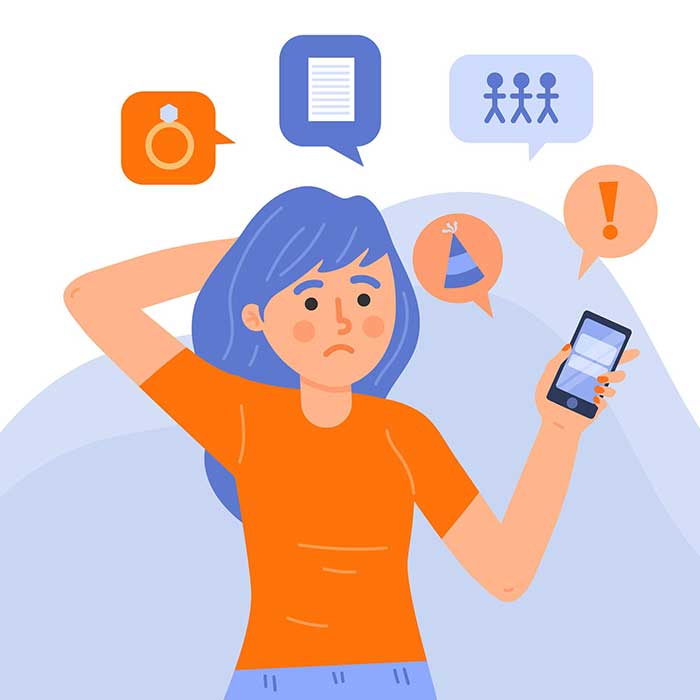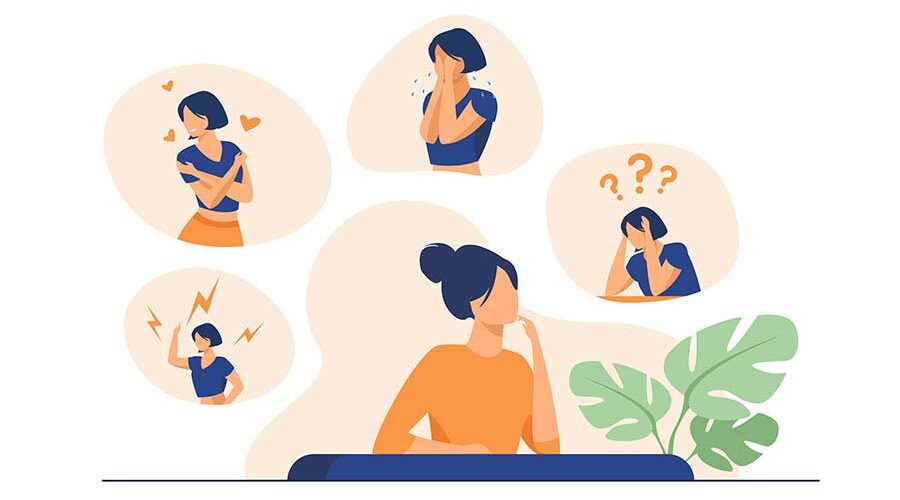When a person is confronted with circumstances that could potentially be problematic or harmful, they frequently experience anxiety. It is also experienced when a person detects a threat from the outside world.
On the other hand, unreasonable and persistent anxiety can eventually develop into a sort of anxiety disorder. Anxiety disorders are broken down into subtypes based on what makes the anxious feelings come up.
A variety of anxiety disorders that are common
Generalized anxiety disorder
A person who suffers from this particular form of anxiety illness will typically suffer from extended anxiety that is frequently unjustified. To be more precise, individuals who suffer from generalized anxiety disorders are unable to describe the rationale underlying their anxious feelings.
This particular kind of worry lasts for an average of six months and most frequently affects women. People who suffer from generalized anxiety disorder are prone to experiencing persistent anxiety, which leads to constant fretting and worrying. This causes symptoms such as a racing heart, difficulty falling or staying asleep, headaches, and lightheadedness.
Specific phobia
In contrast to a person who suffers from generalized anxiety disorder, a person who has a specific phobia is plagued by an exaggerated and, most of the time, unreasonable fear of a particular scenario or thing.
People who suffer from specific phobias have indicators of great dread when they are confronted with the thing or circumstance that they are afraid of, such as trembling, shortness of breath, heart palpitations, and nausea.
Fear of heights, enclosed places, the sight or smell of blood, and animals are all examples of common particular phobias. The fear that someone who suffers from a phobia experiences might be so intense that they may put their own safety at risk in order to flee the scenario.
Panic disorder
Panic disorders, which are characterized by recurrent panic attacks that are frequently unexpected, are another name for the condition known as agoraphobia. Shaking, chest aches, dizziness, a fear of losing control, and an unwillingness to be alone are typical symptoms of social anxiety.
People who suffer from panic disorder are aware that their panic attacks are typically irrational and unjustified. Because of this, people try to avoid being in public settings as well as being by themselves. People can have panic attacks that are so intense that they end up losing control of their bodies and injuring themselves.
Social phobia

A person who suffers from social phobia, also known as social anxiety, is likely to experience symptoms that are comparable to those of panic disorder, particularly when they are in social settings.
When a person who suffers from social phobia finds themselves the focus of attention or in the company of a large group of people, regardless of whether or not those people are strangers, the individual may experience symptoms such as shaking, dizziness, shortness of breath, and heart palpitations.
Obsessive-compulsive disorder
A fixation or thought that won’t let go might bring on feelings of anxiety in a person who has obsessive-compulsive disorder (OCD). They have a tendency to avoid feeling anxious by engaging in behaviors or tasks that are repetitive in nature and serve to prevent anxiety.
A person who is overly concerned with the state of their home’s cleanliness, for instance, can feel anxious at the mere sight of a vase that is ever-so-slightly off-center. In an effort to calm their anxious feelings, this person cleans and organizes everything compulsively or for no apparent reason.
PTSD
Post-traumatic stress disorder (PTSD) is more likely to happen to someone who has been through something scary.It’s possible that he or she will think about what happened, which will make him or her worry and feel anxious.
If a person who suffers from PTSD comes into contact with a stimulus (any object, person, or situation) that he or she associates with the traumatic incident, that person may actually re-experience the event by crying excessively, panicking, or losing control of themselves.
Insomnia and avoidant behavior are examples of the more subtle symptoms. Post-traumatic stress disorder (PTSD) symptoms can show up right away after a terrible event or years later.
When seeking treatment and making progress toward recovery from an anxiety disorder, it is essential to first identify the specific type of disorder that a person suffers from.
The strategies and procedures that are utilized to assist a person in coping with a particular anxiety disorder typically address not only the management of symptoms but also coping skills when the individual is exposed to triggers.
Treatment and rehabilitation of anxiety disorders cannot truly begin until the illness has been correctly diagnosed first.
Read More : 5 Easy Ways To Get Some Quick Relief From Stress, Depression, And Anxiety


